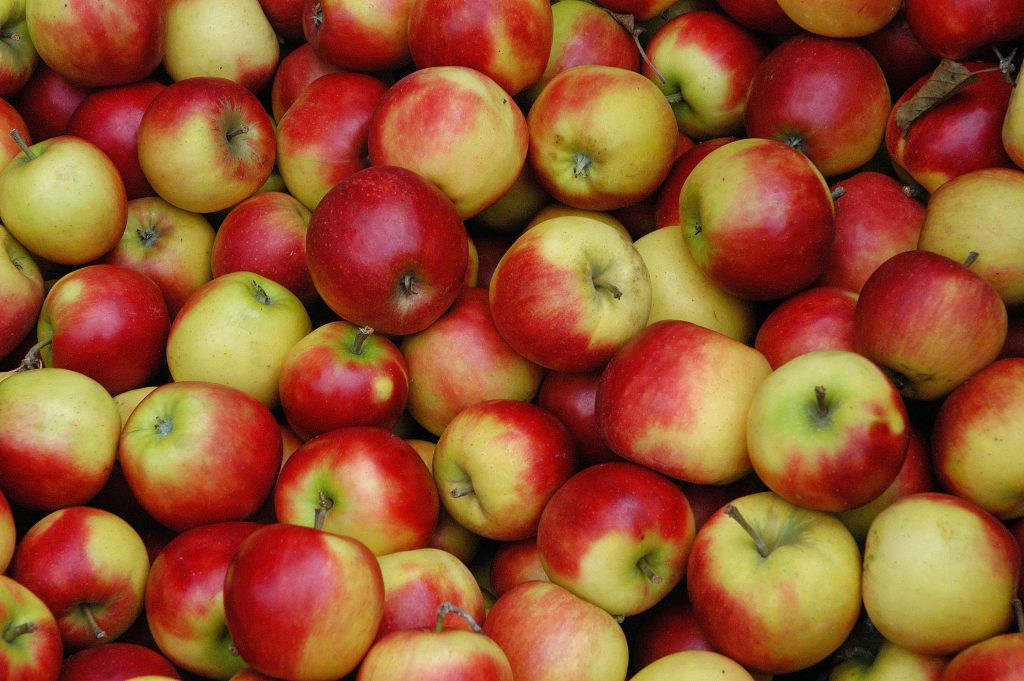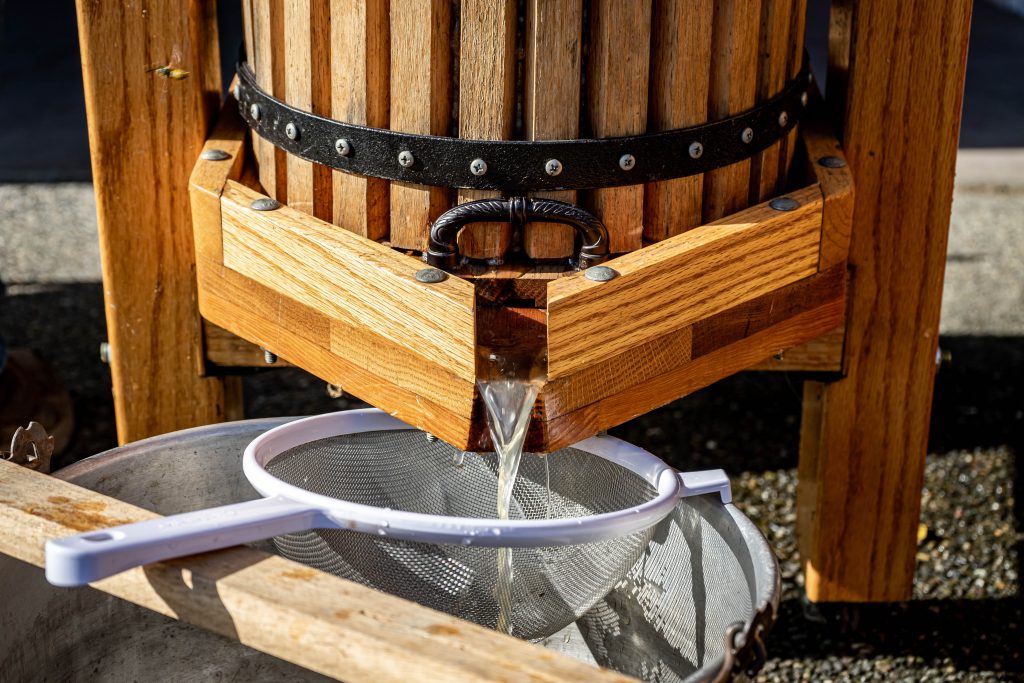This post contains affiliate links which we are compensated for if a purchase is made. Using links costs you nothing and helps to support the ongoing creation of content. Thank you for using them.
How Do You Make Cider Less Dry? There is nothing better than have an apple or pear cider on a hot summer’s day, however, making a high-quality cider is more difficult than it first appears. Many homebrewers have tried to produce a brew only to find that the end result after fermentation is an extremely dry cider. This is generally the result you get irrespective of whether you are preparing the cider from commercial apple juice, crushed apples, a cider extract, or a recipe kit.
To reduce the level of dryness in a cider you need to add non-fermentable sugars/sweeteners to the brew. There is a range of options that can be used which include lactose, maltodextrin, and a whole heap of artificial sweeteners. All of these options can be added at any stage during the process to adjust the flavor including after the fermentation stage.
While adding a sweetener after the fermentation is not the easiest way to add an ingredient to the brew, but the one key advantage, which critically important, to producing a cider you are happy with, is you can taste the brew and adjust its flavor.
I know from first-hand experience, that there is nothing more annoying than producing several batches of cider with different levels of sweeteners and not being able to get the flavor right. So how to get the flavor just right without making successive batches of an ordinary product?

How To Do Adjust The Sweetness Of A Cider?
The best way to adjust the flavor of the cider is by first transferring the cider to a secondary fermentation vessel first which largely eliminates the brews’ exposure to the sedimentary layer, that is present in the primary fermenter. This is necessary as you will need to stir the sweetener into the cider and it is not a good idea to reincorporate the sediment into the brew.
The next stage is to collect a sample of the cider in a kitchen measuring jug or any vessel that has volume marking on the sides to measure the volume of cider you have. It is best to have a volume of around half a quart (half a litre) as this will allow you to be more accurate with your calculations.
If you do not have a measuring jug in the kitchen you can also weigh the sample and convert the mass to volume using the specific gravity measurement, however as the specific gravity generally reads close to 1 I just assume it is one. The conversion factors for a specific gravity of 1 are;
- 1 litre (1000ml) = 1000g for the metric system
- 1 quart = 2.09 pound (lb) for the imperial system
Knowing the size of the sample is you are adjusting is important as it will be used to calculate the quantity of the sweetener that needed to be added to the remainder of the batch.
The next stage is to add the sweetening agent to the cider, generally, the easiest way to do this is by converting the sweetening agent to a liquid form as it incorporates into the brew much more readily allowing adjustments to be made quickly and easily. Most sweetening agents will dissolve easily in boiling water, however, when making up the solution it is important to know the quantity of water added and the amount of sweetener to ensure you are able to scale-up the quantities required for a full batch precisely.
The final stage is to adjust for taste adding known amounts of the sweetener solution to the cider until you are happy with the flavor. The quantity added can then be scaled up to suit the size of the remaining batch.
The batch can then either be bottled immediately or held in secondary fermentation for a period of time to improve flavor further. It is common to hold ciders in secondary fermentation for a period of 4 weeks and 2 months before bottling however whether you do this is entirely up to you.
What Is The Best Type Of Sweetener Is Best To Use For Cider?
The type of sugar that can be used is dependent upon whether you are kegging or bottling. For kegging you can use either fermentable or non-fermentable sugars to sweeten the cider, whereas when you are bottling you can only use non-fermentable sugars to adjust the flavor.
Bottled Cider
For bottled cider, there are several options that can be used potentially to sweeten cider, but the one that you will find is recommended most commonly in homebrew forums is Lactose. However, lactose has a couple of disadvantages that need to be taken into consideration.
The first disadvantage is that the use of Lactose in the cider means that those people with Lactose intolerance, an inability to digest the sugar, cannot consume the drink. And there is a surprisingly high number of people that have this intolerance, 65% of the adult population according to Wikipedia. The second disadvantage is the addition of lactose can make the cider a little hazy sometimes.
The other common non-fermentable sugar that is recommended, in many forums is maltodextrin, which I confess I have not tried personally. I am told that it provides a sweet flavor similar to lactose which is malty but lacks the milky characteristic of lactose. The reason I have not tried it is because it contains gluten which makes it unsuitable for coeliacs, of which 2 live in my household.
However, if you chose to use maltodextrin one of the things that needs to be taken into consideration is that it can contain up to 5% fermentable sugars. To avoid issues with over carbonation there are 2 ways to deal with this either complete a secondary fermentation prior to bottling for at least 2 weeks or adjust that amount of priming sugars downward to avoid over carbonation of the bottles.
The other option is to use artificial sweeteners, of which there are several available on the market which include saccharin, stevia, or sucralose. Unfortunately, the most common ones are not all that ideal for ciders because you can taste that tell-tale artificial flavor which often has a bitter after taste.
However, there a couple of the lesser-known artificial sweetener which I think are the best option for all the choices listed, there are Erythritol or Xylitol. They can be used on a one-for-one basis to replace sugar as they have a similar sweetness and do not affect the flavor of the cider. They are also suitable for use in hard lemonades.
Erythritol and Xylitol is not an ingredient that you are likely to find in the local brew store or health food store, however, it can be purchased online from Amazon, click on the links to see the latest prices.
Kegging
When using kegs to store cider it increases the number of different types of sweeteners that can use to include fermentable sugars. The reason for this is because kegs are force carbonated and do not rely upon priming sugars to converted by yeast to create a carbonated beverage. This fact allows the addition of inhibitors that prevent yeast from converting sugar added for flavor to ethanol and carbon dioxide, if that were to occur it would result in the cider returning to a dry flavor.
One of the most common inhibitors used is potassium sorbate. It’s widely used as a preservative in foods, drinks, and personal care products. It has the advantage of being an odorless and tasteless salt that will not affect the flavor of your cider. The recommended addition rate is half a teaspoon per gallon and it can be purchased on Amazon readily, click here to see the latest price.
Once the yeast is inhibited you are free to add any sugar you like which could include things like honey, apple juice, raw brown sugar, maple syrup etc. To see how an award-winning brewer makes his cider watch the video below. There are plenty of tips and tricks in this video, particularly at the end that will help add a whole heap of complexity to the flavor of your homebrew. Good Luck
